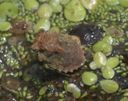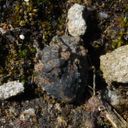Ochteroidea
Ochteroidea
Classification
- Phylum: Arthropoda
- Subphylum: Hexapoda
- Class: Insecta
- Order: Hemiptera
- Suborder: Heteroptera
- Infraorder: Nepomorpha
- Superfamily: Ochteroidea
Pronunciation
How to pronounce Ochteroidea: /ɔkˈtɛrɔɪdiə/
These audio files are automatically generated. While they are not always 100% accurate, they are a good starting point.
Images






Summary
Ochteroidea is a superfamily within the infraorder Nepomorpha, comprising species primarily along riparian zones. These true water bugs exhibit unique morphological traits and play essential roles in aquatic food webs.
Physical Characteristics
Ochteroidea species have reduced antennae and missing or vestigial ocelli. Their rostrum is adapted for piercing food sources.
Identification Tips
Look for their characteristic rostrum used for feeding and the absence of ocelli. They are often found along the edges of freshwater bodies.
Habitat
Primarily found along riparian zones of freshwater habitats.
Distribution
Approximately 14 species in 3 genera in specific regions and roughly 180 species in 6 genera worldwide, excluding polar regions.
Diet
Mostly predators of invertebrates; some species are omnivorous or feed on plant material.
Ecosystem Role
Ochteroidea species play a role as predators in aquatic ecosystems, affecting populations of invertebrates.
Health Concerns
Some species can deliver painful stings, comparable to bee stings, particularly Notonecta glauca.
Collecting Methods
- Sweep netting
- Hand collection along the water's edge
Preservation Methods
- Ethanol preservation
- Drying and pinning for morphological studies
Evolution
Ochteroidea likely evolved in tandem with the other superfamilies of Nepomorpha during the Triassic period, about 250 million years ago.
Similar Taxa
Misconceptions
Often confused with other aquatic insects; not all species are harmful or a nuisance to humans.
Tags
- Ochteroidea
- Nepomorpha
- true water bugs
- Hemiptera
- Heteroptera